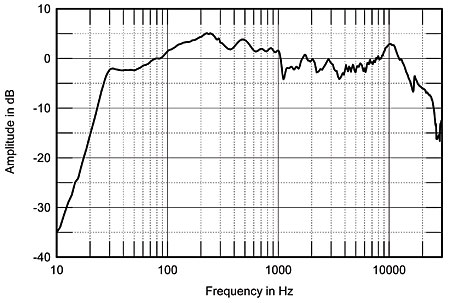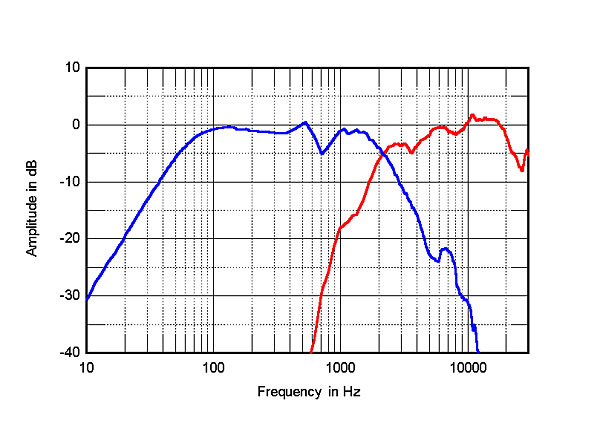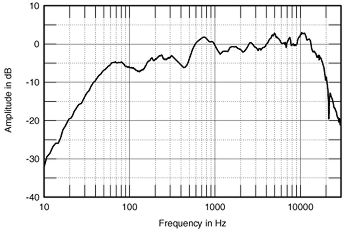Audio Note AN-E (based on Snell type E):
Fig.4 shows the Lexus Signature's response on the tweeter axis at 50", averaged across a 30° horizontal window, spliced at 300Hz to the sum of the nearfield woofer and port responses, taking into account both acoustic phase and the distances of the two radiators from a nominal farfield position.
The speaker's bass is well extended, but does shelve down below 120Hz. Bearing in mind that this trace includes the usual 2pi boost in the upper bass that results from the nearfield measurement technique, it looks as if the AN-E really doesn't produce as much bass as you might expect. I'm not surprised that Audio Note recommends placement close to the wall behind it. This will both extend the low frequencies, as AD found, and bring up the midbass level, though at the expense of lower-midrange smoothness.
From the owner's manual:
The ported cabinet has been designed to be placed close to room boundaries, where the bass performance is augmented significantly by the additional reinforcement offered by the nearby walls.
ATC SCM7 v3:
Fig.3 shows the individual responses of the woofer (blue trace) and tweeter (red). Below 350Hz, the blue trace shows the woofer's output measured in the nearfield. There is virtually none of the rise in the upper-bass response that usually results from measuring in the nearfield—the assumption behind a nearfield measurement is that the speaker baffle extends to infinity in all directions, which boosts the measured low-frequency output below a frequency related to the actual baffle dimensions.
The SCM7's output is down by 6dB at the cabinet/woofer tuning frequency, as anticipated from the impedance graph. This measured behavior suggests that the little ATC will benefit from some boundary reinforcement; otherwise, the speaker's bass will sound, as JM found, "'respectable' rather than 'convincing.'"
Naim NBL:
The magnitude peak centered at 42Hz in fig.1 (impedance) indicates the tuning of the woofers' sealed enclosure and implies only moderate low-frequency extension. However, as this tuning doesn't allow for the effects of the adjacent room boundaries on the floor-adjacent woofer mounting, not
too much should be read into it.
Fig.4 shows the NBL's response on the tweeter axis, averaged across a 30 degree horizontal window to minimize the effect of position-dependent, and hence irrelevant, interference effects. Though it is very even, the entire treble is shelved-up compared with the lower midrange and bass, which is why PM commented on the speaker's bright, forward balance. As I've said, the NBL's low bass will be boosted by the Allison Effect, but this will leave the region between 300Hz and 600Hz depressed in comparison with the regions above and below. In addition, as PM found in his in-room measurements, the upper midrange is somewhat exaggerated, which will make the speaker sound very detailed but also very critical of matching electronics.
The NBL is nominally intended to be positioned close to the rear wall (though it's always worth experimenting); each bass driver therefore operates into a sphere quadrant, which provides considerable boundary reinforcement and (just about) allows the use of two quite modest 8"-frame drivers with relatively inefficient sealed-box loading.





